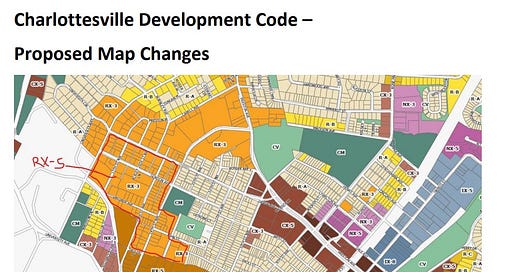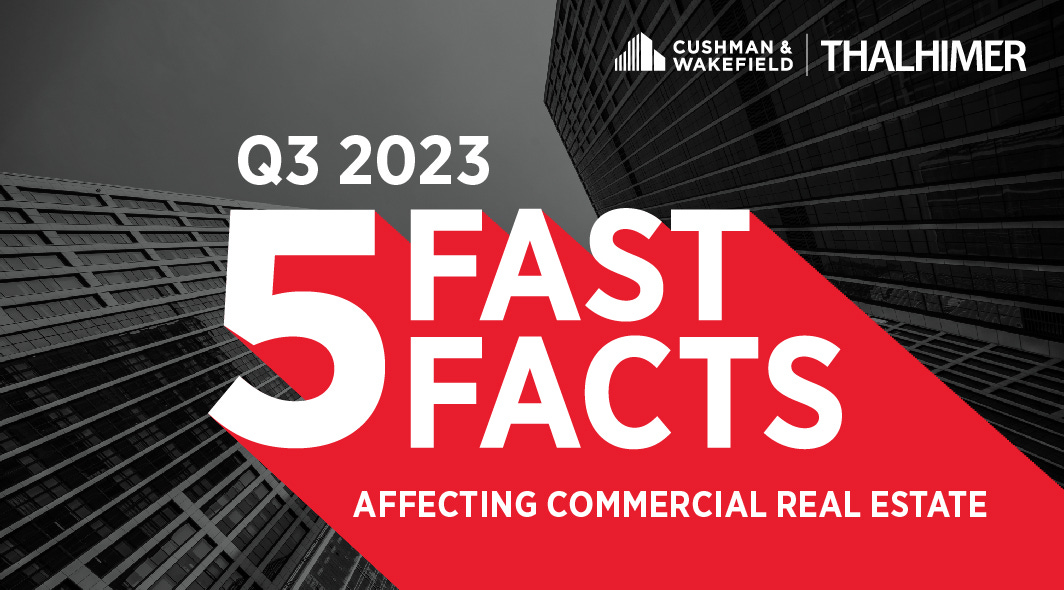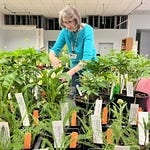Brace yourselves for October is the month that there may be more references to particular Citizen Band radio codes, a tee-hee that only works under the America system of naming dates. Today is 10-3, which means “stop transmitting.” Unfortunately, we’re only at the beginning of this edition of Charlottesville Community Engagement so you’ll have to wait about fifteen minutes.
On today’s program:
A regional real estate firm lists five facts about the commercial property market in Charlottesville
Construction is set to get underway this month for the restoration of a stream in the city’s McIntire Park
The Charlottesville Planning Commission makes changes to the draft zoning code during their second set of deliberations before turning it over to City Council.
First shout-out: Banned Book Week Trivia Night on October 4
In today’s first subscriber-supported shout-out: This is Banned Books Week, a time to honor those publications that some authorities attempt to stop people from reading. JMRL is celebrating with a trivia night at Random Row Brewing Company at 7 p.m. on Wednesday, October 4, 2023, with prizes and free banned books. Thanks to the Friends of the Library. For more information, email kfarrell@jmrl.org.
Real estate firm lists “five fast facts” for Charlottesville region
It’s the final quarter of 2023 and that means it is time for the real estate firm Cushman & Wakefield | Thalhimer to put out a regular set of “five fast facts” for each of the markets that it covers. That includes Charlottesville and I include what they’ve listed:
The U.S. News and World Report has ranked the University of Virginia as the #5 public school in the United States and the #24 university overall. Of course, UVA is in a four-way tie for that ranking with Carnegie-Mellon University in Pittsburgh, Emory University in Atlanta, and Washington University in St. Louis, Missouri. (read the rankings)
In July it was announced that Charlottesville-based nanotechnology company Laser Thermal would invest $2.9 million in its operations in the Ix Park to create 28 additional jobs. Learn more about what the company does in this August 2 story from UVA Today.
Virginia Diodes will invest $2.5 million and create 24 new jobs. The company began in 1996 as a UVA spinoff and became independent in 2004. Learn more in this press release from the Virginia Economic Development Partnership.
Ground has been broken for a 279-unit apartment complex in northern Albemarle to be called The Ridge at North Pointe. This is being developed by the Great Eastern Management Company according to a July 25 press release.
The final fact is a broad one. “More than 2,000 multifamily units have been built since the start of 2020, expanding the total inventory by more than 16 percent.”
For information on other markets, visit the Cushman & Wakefield | Thalhimer website.
Construction to begin on Schencks Branch
The city of Charlottesville has teamed up with the Botanical Garden of the Piedmont to address deterioration of one of the waterways that runs through the middle of the community. In all, 820 linear feet of Schenks Branch will be restored as it runs through McIntire Park on land leased by the nonprofit group.
“The stream is experiencing active severe erosion, sending excessive amounts of sediment and nutrient pollution downstream,” reads a press release. “Some of the unstable, eroding stream banks are as high as 12 feet tall and data collected indicate that 436,000 pounds of sediment erode from the stream every year.”
That makes it an unhealthy place for aquatic life. The Botanical Garden of the Piedmont hopes to use the restoration as an educational component of their work.
For more information about the project:
Schenks Branch Tributary Stream Restoration Story Map – Take a look at an interactive virtual stream tour, maps, and photos of restoration techniques
City of Charlottesville Project Webpage – Check the project status and construction progress updates
Botanical Garden of the Piedmont – The nonprofit groups’ stream restoration page
Second shout-out: JackFest coming up on October 22
In today’s second subscriber-supported shout-out: Looking for a free fall event for your family that will help raise money for cancer treatments for patients at UVA’s Children’s Hospital? Mark your calendar for October 22 and JackFest at Foxfield in Albemarle County. That will be from noon to 4 p.m. at Foxfield.
The free event is named for Jack Callahan, a boy who beat back metastatic cancer after a 13-month course of intensive treatments in 2019 and 2020. JackFest raises funds for Ronald McDonald House to support for families who need assistance while other treatments are underway as well as. Events include:
Kid’s running races and family relays including a Superhero Dash, Kids’ Mighty 1-Mile Run, and a Child-Parent Relay Race
Family activities such as an inflatable obstacle course, bounce house, and slides; a petting zoo, and a truck touch with emergency vehicles
Adult and kid food options - including food trucks - and local beer & wine
While the event is free, people can sign up for the races and the Team Fundraising Challenge at the JackFest website at www.jackfest.net.
Charlottesville PC makes some changes to zoning code during deliberations
The public comment period for the Cville Plans Together isn’t quite over as City Council will soon schedule their public hearings on land use reform that will transform Charlottesville’s future and accelerate a trend toward more building space allowed within city limits.
There were 110 speakers at the Planning Commission’s public hearing on September 14 and five days later the Planning Commission had their first set of deliberations. They talked about anti-displacement efforts among other things.
On September 26, five of the six Commissioners went through a list of recommended changes to the zoning code during their second set of deliberations. There is also one vacancy and has been since June.
This summary is not an exhaustive one but attempts to capture the conversation.
First up, Commissioner Philip d’Oronzio sought to reduce the minimum lot size allowed in Residential A districts from the 6,000 square feet requirement. Residential-B and Residential-C have lower amounts.
“Why aren’t we at 2,500 square feet across across all three districts?” d’Oronzio asked. “It doesn’t make sense to have R-A at 6,000 and the other two at 2,500.”
Commissioner Rory Stolzenberg said the two different sizes captures a concept in the current zoning which separated R-1 properties into two types.
“Historically we have R-1 large lots and R-1 small lots,” Stolzenberg said. “That’s a result of R-1 large lot being the original R-1 and R-1 small lots were introduced in 1991.”

Commissioner Lyle Solla-Yates proposed increasing the amount to 5,000 square feet, which Stolzenbeg said he could support. However, the available members held a 3-2 straw poll to go with the staff recommendation to stay at 6,000 square feet.
The Commission also discussed whether to allow two additional bonus units to lots in Residential-C zones to keep the existing structure. The draft says eight and Commission Stolzenberg suggested ten.
“You have areas in the city that are designated R-C where the existing house is very valuable and pretty much under no circumstances will it be viable to demolish it,” Stolzenberg said. “So you are effectively reducing the allowance in those areas by one because that house is already there so pushing the pressure to those other areas where the cheaper houses that are more likely to be demolished. It seems like a pretty easy and simple thing to do to disincentive demolition.”
Commissioner Lyle Solla-Yates suggested allowing the bonus height of an additional floor in Residential-C zones to allow four story townhomes.
“The best affordable home ownership tool that I am aware of is a stacked two over two townhouse,” Solla-Yates said. “The current code bans it in all residential areas and I think that if we want to do the things we say we want to do, we should find a way to do it.”
James Freas, the city’s director of neighborhood development services, said the additional floor would cause the structure to be more than “house-scale.”
“Ultimately it’s a policy decision and we’ve made various statements about house-scale and I think the decision has been ‘does four-stories keep us within or take us out of house-scale,’” Freas said. “I’ve certainly heard arguments that present four stories as house-scale. I’ve heard arguments that say the other way.”
Commissioner Philip d’Oronzio said he would support the bonus height in the other residential areas as well. The current base level in the proposed R-A and R-B districts is 28 feet or three and a half stories. d’Oronzio also said the word “house-scale” is a subjective one.
“These two-over-twos for example wouldn’t I don’t think be taller than C&O Row which is really three stories for the most part above grade,” d’Oronzio said.
d’Oronzio would even allow that height without the affordability requirements.
Commissioner Carl Schwarz said he would support that, but wasn’t sure it would get three votes on City Council.
“But three and half stories makes me feel a lot better,” Schwarz said.
Commissioner Hosea Mitchell said he was concerned about decoupling the bonus height from affordability requirements.
“I’m cool with four [stories] and 45 [feet] but only if there’s a reason to do it and the only reason I would want to do that is if I get some affordable housing,” Mitchell said.
Stolzenberg also expressed reservations given comments from property owners who are against the larger structures. Stolzenberg and d’Oronzio said there are plenty of examples of that amount of height in existing buildings throughout the city’s existing residential zones.
“Although we must consider the public comment, we can’t be enslaved by it particularly when we are encountering that might be not factually wrong,” d’Oronzio said.
The five Commissioners present then discussed making the base height in all three residential districts at 35 feet with a five foot bonus for affordable units.
“So the public has to endure seeing five extra feet but they can be safe in the knowledge that there are affordability units on site,” Stolzenberg said.
Schwarz wanted to keep the draft as is for R-A and R-B and add additional height in R-C. That appeared to be the consensus at this time.
Discussion about specific changes to the code went on for another hour or so before attention turned to uses allowed in each district. The five Commissioners present agreed to allow day care centers with more than 12 children as a use in residential districts with a special use permit.
Stolzenberg also wants to allow outdoor entertainment in residential districts with a special use permit.
“The Rivanna River Company would be banned under this current ordinance if it were not completely non-confirming,” Stolzenberg said. “I say we should allow new Rivanna River Companies by special use permit.”
The other four commissioners supported that change.
Commissioner Lyle Solla-Yates said he wants to make it easier for limited commercial uses to be allowed in residential districts.
Updated paragraph - October 4, 2023
“Staff has recommended that all go through the [special use permit] process which I think will kill all of them,” Solla-Yates said. “Small businesses that don’t exist don’t have the cash flow to survive a year-long SUP process.”
Solla-Yates suggested allowing them by-right on corner lots in Residential-C zones. Mitchell could support that. Stolzenberg said he could support by-right in Residential-B zones but suggested maybe limiting it to food uses. A straw poll of 3-2 favored allowing them in Residential-B.
A second discussion centered around a requirement to allow at least one residential unit to enable that by-right use as well as limiting the size of the space.
Commissioners also recommended a change to the code to allow people to ride bicycles on sidewalks.
There were discussions about specific changes to the zoning map.
Commissioner Schwarz recommended changing West Main Street east of the Drewary Brown Bridge to CX-8 rather than CX-5.
“The buildings are already taller than five stories,” Schwarz said.
One issue is how to protect Westhaven from more intense development. CRHA has asked for $15 million for an eventual redevelopment.
There’s another suggestion to increase the area around 14th Street from RX-3 in the draft map to RX-5.
Schwarz also suggested increasing properties on Fifth Street Extended to CX-10 from CX-5. These include the properties where a WaWa is currently under construction and the Willoughby Shopping Center.
Stolzenberg wants most of the land on U.S. 29 between Barracks Road Shopping Center and and up to nearly Greenbrier Drive to be NX-10. He suggested density is already happening along the corridor with projects such as Great Eastern Management’s redevelopment of Seminole Square as well as redevelopment of the Asian Foods market just across the border with Albemarle County.
“I am terrified of the idea of Bodo’s disappearing but I believe they own it or the original does so I’ve assured myself that I’m sure they would just put a Bodo’s in the bottom of the new building,” Stolzenberg said.
Behind that Bodo’s is the English Inn, which was purchased in early September 2022 for $11 million.
The Commissioners continued their suggested changes in detail, and I’m hopeful there will be a new map before Council takes a final vote so they know what they’re going to vote upon.
The day after the Planning Commission’s second deliberation, City Council held their first conversation. I’ll have information about that in perhaps the next edition of this newsletter and podcast.
The Charlottesville Planning Commission will have their next conversation tomorrow.
Reading material:
On the Road to Zero: Fairfax Connector Introduces Battery-Electric Buses, Fairfax County Government, September 29, 2023
Architectural Review Board looking at plans for project near John Warner Parkway, Bria Stith, WVIR NBC29, October 2, 2023
The end of #584
I did not make it through the end of the Charlottesville Planning Commission’s second deliberations and this is only due to lack of time. As I publish this, City Council will be in the middle of their second set of talks and I want to get to the first. Many view the work of the Cville Plans Together initiative as something to either vote up or vote down.
My reality is that there’s a lot of nuance and any big land use change could surely have consequences. My hope as a journalist is to bring as much as I can to readers and listeners about attempts to discuss potential negatives and to provide at least one glimpse at arguments that are far from simple.
Thanks to paid Substack subscribers for allowing me to keep going, as well as Patreon contributors. Today’s two shout-outs come from a mixture of those, and if you’re interested in having one, contact me.
The Internet company Ting will match your first payment.
Ting sponsors Scott Stadium, the Ting Paviliion, and the John Paul Jones Arena. Maybe you’re in the market for a new high speed internet provider?
If you’re in Charlottesville, check out Ting! If you sign up for Ting at this link and enter the promo code COMMUNITY, you’ll get:
Free installation
A second month for free
A $75 gift card to the Downtown Mall



















Share this post